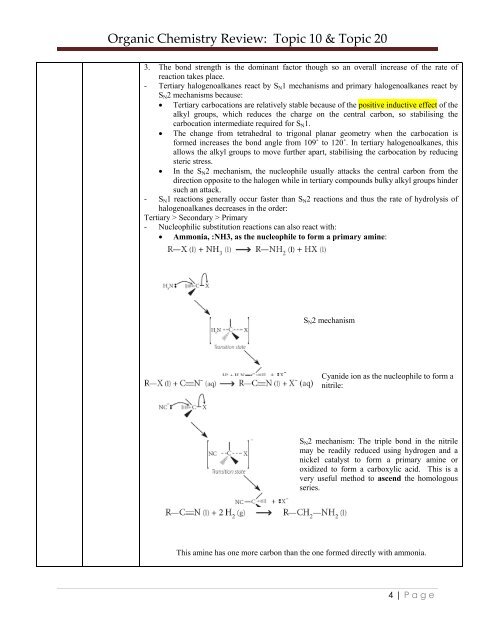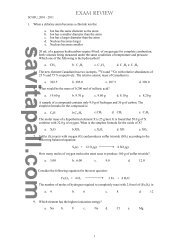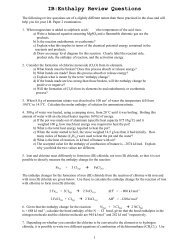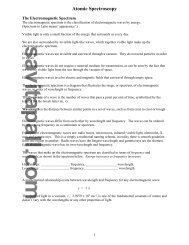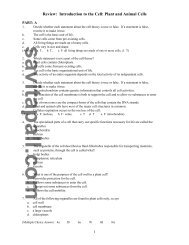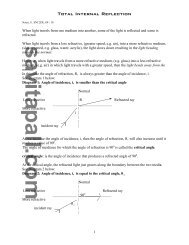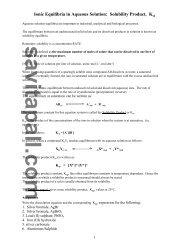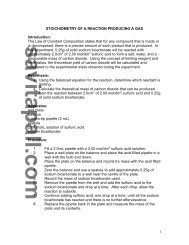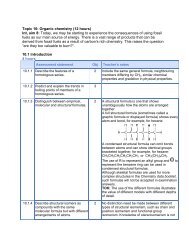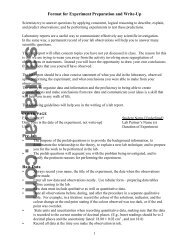Organic Chemistry Review: Topic 10 & Topic 20 - Savita Pall and ...
Organic Chemistry Review: Topic 10 & Topic 20 - Savita Pall and ...
Organic Chemistry Review: Topic 10 & Topic 20 - Savita Pall and ...
You also want an ePaper? Increase the reach of your titles
YUMPU automatically turns print PDFs into web optimized ePapers that Google loves.
<strong>Organic</strong> <strong>Chemistry</strong> <strong>Review</strong>: <strong>Topic</strong> <strong>10</strong> & <strong>Topic</strong> <strong>20</strong><br />
3. The bond strength is the dominant factor though so an overall increase of the rate of<br />
reaction takes place.<br />
- Tertiary halogenoalkanes react by S N 1 mechanisms <strong>and</strong> primary halogenoalkanes react by<br />
S N 2 mechanisms because:<br />
• Tertiary carbocations are relatively stable because of the positive inductive effect of the<br />
alkyl groups, which reduces the charge on the central carbon, so stabilising the<br />
carbocation intermediate required for S N 1.<br />
• The change from tetrahedral to trigonal planar geometry when the carbocation is<br />
formed increases the bond angle from <strong>10</strong>9˚ to 1<strong>20</strong>˚. In tertiary halogenoalkanes, this<br />
allows the alkyl groups to move further apart, stabilising the carbocation by reducing<br />
steric stress.<br />
• In the S N 2 mechanism, the nucleophile usually attacks the central carbon from the<br />
direction opposite to the halogen while in tertiary compounds bulky alkyl groups hinder<br />
such an attack.<br />
- S N 1 reactions generally occur faster than S N 2 reactions <strong>and</strong> thus the rate of hydrolysis of<br />
halogenoalkanes decreases in the order:<br />
Tertiary > Secondary > Primary<br />
- Nucleophilic substitution reactions can also react with:<br />
• Ammonia, :NH3, as the nucleophile to form a primary amine:<br />
S N 2 mechanism<br />
Cyanide ion as the nucleophile to form a<br />
nitrile:<br />
S N 2 mechanism: The triple bond in the nitrile<br />
may be readily reduced using hydrogen <strong>and</strong> a<br />
nickel catalyst to form a primary amine or<br />
oxidized to form a carboxylic acid. This is a<br />
very useful method to ascend the homologous<br />
series.<br />
This amine has one more carbon than the one formed directly with ammonia.<br />
4 | P age


